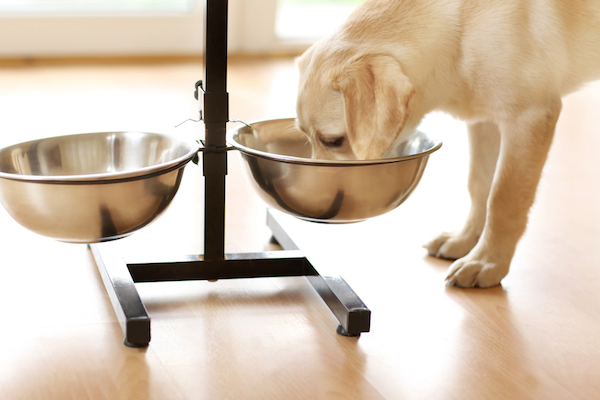Dog Allergic To Stainless Steel Bowl
Table of Contents
You might think that metal dog bowls are good for your dog’s health. It appears to be a safe material, as long as you buy a rust-free variety. Nickel is a threat in many manufactured metal products.
Stainless steel is made from nickel-iron. Stainless steel is one of the most common metals used in dog bowls. Allergy to Stainless steel bowls may be harmful to your dog if he is allergic to nickel.
Nickel allergy can cause an allergic reaction under your dog’s chin. Because all dogs eat with their chins in their dishes, a nickel allergy could easily develop from a stainless steel dog bowl.
What is nickel allergy?
Nickel is a trace mineral that helps humans and dogs absorb iron. It is naturally found in peas, grains, soy, and shellfish. Nickel is found in many everyday products, causing allergic dermatitis, rashes in animals allergic to nickel. Nickel is also found in stainless steel dog dishes and collars. Surgical stainless steel contains very little nickel, it can also cause contact allergies or food allergies depending on how it is used.
Symptoms of nickel allergy in dogs
Contact allergies cause outbreaks on the dog’s face, pelvis, and paw pads. Allergy symptoms tend to get worse with repeated exposure. Food allergies can cause nausea, vomiting, and diarrhea, as well as other allergic symptoms such as:
- Bumps
- Affected areas chewed
- Coughing
- Otitis
- baldness
- Itching
- Nasal congestion
- licking
- Redness
- Scratching
- thickened skin
- Skin ulceration

Causes of contact dermatitis in dogs
The immune system overreacts to a harmless allergen, causing allergic contact dermatitis in dogs, while irritant contact dermatitis cause skin damage.
Contact dermatitis comes in two forms, and it can be a symptom of other conditions. You can contact your vet and describe recent irritants your dog may have encountered.Some common irritants and allergens that can cause contact dermatitis in dogs include:
- Plants
- Agrochemicals for gardening (mulch, cedar chips, fertilizer, pesticides, etc.)
- A carpet or a rug.
- Abrasive surfaces
- Shampoo and soaps
- Floor wax, deodorizers, or household cleaners
- cream and lotions
- Medications
- Microorganisms or parasites
- Bug bites
- Anti-flea collars or drugs
- The sun’s rays&heat
- Lupus, dandruff, and other conditions.
How to diagnose Metal Allergies in Dogs
For dogs with moderate to severe allergies, allergy testing is the best diagnostic tool and the best path for treatment.
Nowadays there are many testing methods available in the market. A blood test to check for antigen-induced antibodies in the dog’s blood is the most common. Intradermal skin testing is another option.
A small amount of antigen is injected into a shaved portion of the dog’s skin in this method of testing.
This is done in a predictable order so that the violating antigen can be identified if the dog has a small raised reaction.
The shaved area is examined over a period of time (hours) to see which antigens, if any, caused a reaction. Allergy testing is carried out in order to develop a treatment plan for the allergic dog.
Treatment of stainless steel allergy in dogs
The most effective treatment for a nickel or stainless steel allergy is avoidance from a specific metal once a condition is diagnosed.
Nickel is a common component of many metal alloys such as stainless steel, as well as a common dietary component, making avoidance more difficult than it appears.
If your allergic dog comes into contact with nickel, there are a few things you can do to help your pet feel better.
- By improving your pet’s overall skin health and supporting the immune system you can overcome contact dermatitis in dogs.
- Adding omega-3 supplements and probiotics to dog daily diet schedule can also help to prevent the skin reactions from becoming debilitating.
- Your dog’s veterinarian may prescribe corticosteroids to reduce swelling and antihistamines to relieve itching if a reaction occurs. Secondary skin infections are common in dogs with allergies and antibiotics may be prescribed to combat these allergic conditions
- Many medicated shampoos contain compounds that help soothe irritated skin and reduce inflammation. Also, frequent bathing (weekly to biweekly) can remove allergens from the dog’s coat

Frequently Asked Questions
1. What should I do if my pet has contact dermatitis?
It’s vital to get a proper diagnosis. Discuss it with your veterinary doctor. If your vet suspects contact dermatitis in your pet, they may refer you to a veterinary dermatologist. A dermatologist is trained to diagnose, treat, and prevent skin allergies.
2. How to treat contact dermatitis?
Preventing contact dermatitis is the best treatment. If the irritant is metal, you can protect your pet by giving food in stainless steel bowls. . If avoidance isn’t possible, glucocorticoids can help treat dog contact allergies.
3. Can I use a hypoallergenic diet to treat contact allergy?
Yes, Hypoallergenic dog food is also very helpful in the treatment of contact allergies. In that condition try to add a single source of protein food formula in your dog food to prevent allergies.
Conclusion
Your veterinarian can run a number of tests to determine what is causing your dog’s allergies. Medication, topical preparations, and shampoos are some of the treatments available for dealing with allergies. Your veterinarian will also advise you on how to reduce allergy risks through preventative measures.
If your dog has a severe allergy to stainless steel bowls, then avoid giving food in that bowls and explore any other option.
To have your dog professionally tested for allergies, contact 1st Pet Veterinary Centers. These centers collaborate with you and your dog to prevent, diagnose, and treat allergic reactions in dogs.
References:
- https://www.researchgate.net/publication/333881012_THE_MOST_COMMON_ALLERGIC_DISEASES_IN_DOGS/link/5d0a82cb92851cfcc6250f9f/download
- http://www.dogallergiesonline.com/resources/allergies-in-dogs-resources/environmental-allergies-in-dogs/
- https://pediatrics.aappublications.org/content/pediatrics/145/5/e20200628.full.pdf
- 1xbet официального Сайт Казино Игровыми Автоматами 1хбет - April 17, 2024
- Бездепозитные Бонусы За Регистрацию и Онлайн Казино 202 - April 9, 2024
- Yeni Deneme Bonusu Veren On Line Casino Siteler - January 31, 2024






